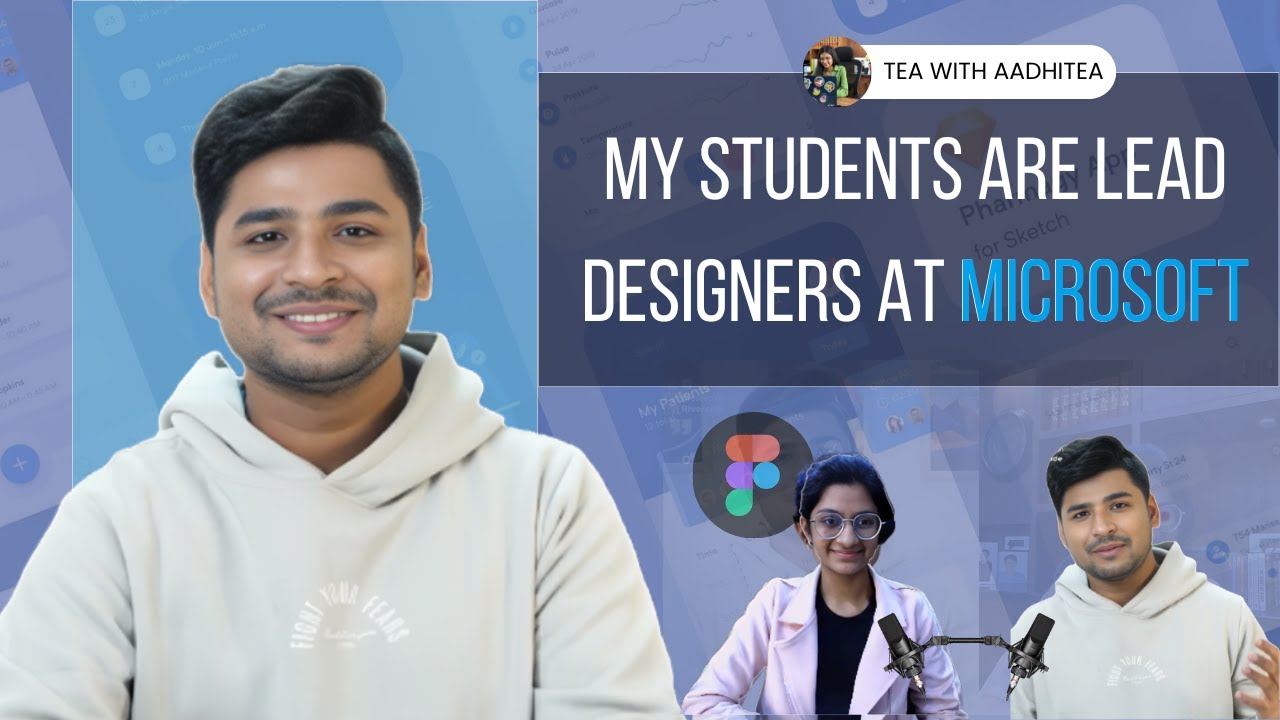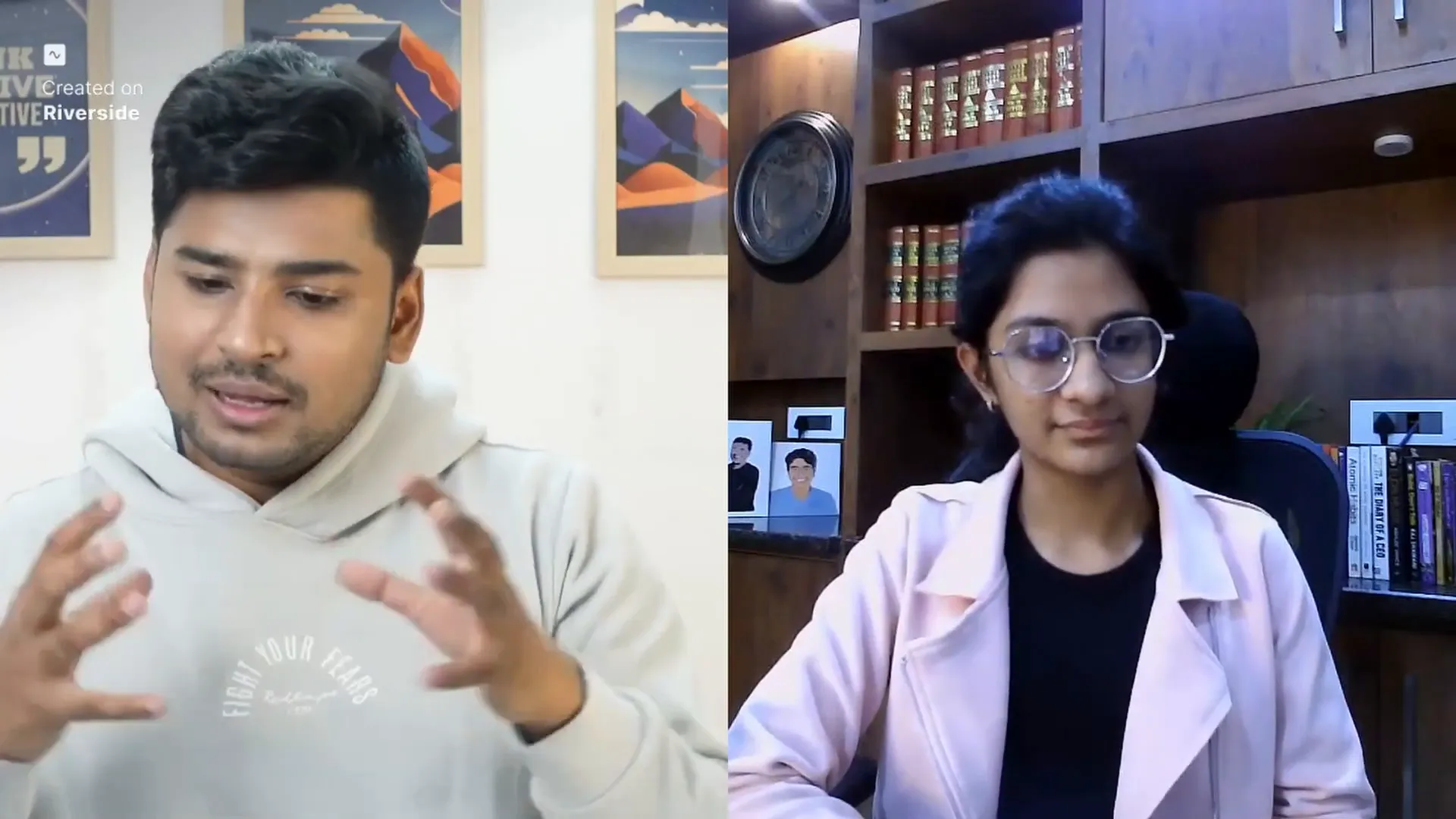My extensive list of skills
Interview with Rohan Mishra, UX Coach and Mentor- Building Design Leaders and a Practical Guide to a UI/UX Design Career

This interview captures a long-form conversation between Aadhi Tea and Rohan Mishra — a UX coach, former product designer at big tech companies, and the founder of Mastry — who has helped thousands of students launch a UI/UX Design Career. If you are researching how to start, grow, or price your work as a product designer, this interview-style article distills practical steps, real-world anecdotes, and tactical advice you can use right away.
Throughout this piece you will find clear roadmaps for launching a UI/UX Design Career, communication and research techniques, the role of AI in design, psychological patterns brands use, what separates good from great designers, pricing strategies for freelancers and agencies, and concrete lessons from Rohan’s time at Zomato. Screenshots and a video embed have been included where helpful to illustrate points from the original conversation.
Table of Contents
- Outline
- Actionable Steps: A 3‑Month Plan to Launch a UI/UX Design Career
- How to Build a Portfolio That Hires
- Hiring Advice for Companies Looking for Designers
- Ethics and the Long-Term UI/UX Design Career
- Case Illustration: Improving a Cab Booking Flow
- Advice on Staying Relevant as AI Changes Design Tools
- Final Words from Rohan
- Frequently Asked Questions (FAQ)
Outline
- Introduction: Who is Rohan Mishra and why his perspective matters for a UI/UX Design Career
- Roadmap for beginners: Core skills and a straightforward path into product design
- Communication and storytelling: How to get better and why it matters in a UI/UX Design Career
- Teaching a child the essence of UX: Simple metaphors that reveal deep truths
- AI and design: Where AI will help and what humans will still own in the UI/UX Design Career
- Psychology designers use: Ethical patterns vs dark patterns
- Good designer vs great designer: The art of asking questions and research rigor
- Work at Zomato: What Rohan learned and shipped
- Salaries and expectations for a beginner in a UI/UX Design Career
- Pricing your services: Practical rules for freelancers and agencies starting out
- Conclusion and final advice
- FAQ — common questions about the UI/UX Design Career, answered
Q: Rohan, can you introduce yourself and tell us why viewers interested in a UI/UX Design Career should listen to your story?
Rohan: Hey, I’m Rohan Mishra. I’ve worked as a product designer and UX professional, been an educator and mentor for more than two lakh students, and founded Mastry to provide practical courses for people wanting to build a UI/UX Design Career. I began as a web developer, then moved into UX because I realized building products was only half the job — making them easy and delightful to use is the other half. Over the years I’ve helped students move into roles at companies like Paytm, Razorpay, Classplus, Jupiter Money, and Microsoft, and I’ve shipped dozens of design projects across businesses of different scales. My experience spans teaching, hands-on design, and building systems that scale. That practical mix is why I focus on usable, testable, and repeatable advice for anyone starting a UI/UX Design Career.

Q: For someone who wants to start a UI/UX Design Career in 2025, what should their roadmap look like?
Rohan: First, understand the essence: UI/UX is often described as "problem solving," but that phrase is too fuzzy. What does problem solving mean? As designers, our job is not just to fix things like a cobbler repairing a shoe. We design systems so technology can be used by many people comfortably, safely, and with delight. That means three core areas you must master early in your UI/UX Design Career:
- User understanding and psychology: Learn to observe, interview, and empathize. What motivates users? What are their pain points? Why do they behave the way they do? If you can map motivations and pain points you can design with intent.
- Execution skills: Wireframing, prototyping, and visual design. When you start out, you’ll be asked to convert wireframes into final-looking designs (Figma is the industry standard). Learn how to visualize flows, build components, and produce presentable mockups.
- Communication: Present your thinking. Can you explain why this solves the problem and what trade-offs you considered? Can you tell the story behind your design?
Focus on these core skills first. Don’t be distracted by exotic techniques. Build a portfolio that demonstrates user understanding, design execution, and the ability to communicate outcomes. That combo will kickstart your UI/UX Design Career.

Q: You mentioned communication is critical. How does one improve communication specifically for a UI/UX Design Career?
Rohan: Communication is where many designers lose the job, even if their mockups are solid. Here are pragmatic steps to improve communication that will directly help your UI/UX Design Career:
- Storytelling: Human beings have always encoded lessons and knowledge in stories — gather the context, sequence the problem, describe the tension, and present the resolution. When you share your design, frame it as a story: user's current state (pain), what you tried (options), and the proposed solution (benefit).
- Active listening: Learn to listen to understand, not to respond. This matters in user interviews and stakeholder conversations. If you only listen to prepare a rebuttal, you’ll miss critical signals.
- Document everything: Take notes during interviews and meetings. Our brains forget; writing preserves user quotes, edge cases, and clarifying points that later justify design decisions.
- Simplify your language: Many stakeholders don’t have the context you do. Present your idea in simple terms and then layer details. This increases buy-in and clarity.
Combine storytelling, listening, and documentation. That trifecta will be among the most valuable soft skills in your UI/UX Design Career.

Q: How would you explain UI/UX to a six- or seven-year-old?
Rohan: I love this question because it forces clarity. I’d use a toy example: imagine a tricycle. If the handle is too high or too low for you, it’s uncomfortable. But if the handle is the right height and the seat is comfy, and the wheels turn smoothly, you enjoy riding it. UI/UX is about making things fit the user — the right height, the right buttons, less confusion, clear labels — so people can do what they want easily. If the toy is confusing, you won’t use it — so designers should make it naturally easy. That simple metaphor captures the goal we chase in a UI/UX Design Career: removing friction and shaping an intuitive experience.
Q: AI is a big topic. Which areas of UI/UX are underutilizing AI today yet show potential?
Rohan: AI is not new; it has been evolving for decades. Recent advances and accessible chat interfaces like ChatGPT made AI mainstream and practical for designers. For a UI/UX Design Career, AI has two big impacts:
- Visual design automation: AI can generate mockups, style guides, and draft variations quickly. Today the accuracy and precision aren’t perfect, but this is improving rapidly. In months we might see AI produce production-ready visuals for many common screens.
- Usability testing and prototyping: AI can help synthesize test results, create prototypes from textual prompts, and run automated micro-tests. However, user research — speaking to people, reading body language, understanding context — will remain a human-led task for longer. Humans interpret nuance and emotion in ways AI cannot fully replicate yet.
So AI will augment many parts of the UI/UX process, and visual design and some testing workflows will get automated. But deep user research, empathic interviews, and final product judgment — these remain human responsibilities in a UI/UX Design Career. Even when AI speeds up craft, humans will still provide critical review, contextual judgment, and product strategy.
Q: What psychological tricks do brands commonly use in their interfaces? Which ones are ethical and which are dark patterns?
Rohan: Brands use psychology to nudge behavior. A common ethical technique is scarcity — showing low stock or a limited time offer. If the user already intended to buy, scarcity helps them act quickly. Another ethical principle is clarity and reducing cognitive load: a clear call-to-action or obvious progression increases conversions and satisfaction.
Dark patterns are when the product manipulates users against their intent. Examples:
- Forcing additional purchases during checkout without a clear opt-out (confusing or hidden “decline” button).
- Making it difficult to cancel subscriptions by hiding exit paths or requiring many steps.
- Misleading copy that tricks users into choosing options they didn’t want.
For a sustainable UI/UX Design Career, understand the line between persuasion and manipulation. Use psychology to highlight value, reduce friction, and help users. Avoid dark patterns. A confused mind says no — clarity should be your north star.
Q: In your view, what separates a good designer from a great designer?
Rohan: The difference is less about visual polish and more about approach. A good designer can take a brief and start designing screens. A great designer asks the right questions first. Great designers:
- Start with inquiry: Why are we solving this? Who is the real user? How are they solving it now?
- Do real user research: They speak to people, observe behavior, and read subtle signals (including body language and hesitations).
- Communicate with context: They present designs with a story — research insights, trade-offs, and validation plans. They don’t just show screens; they explain the "why" behind each choice.
In short, being curious, doing qualitative research, and mastering communication is the formula for ascending from good to great in a UI/UX Design Career.

Q: You worked at Zomato. What was that experience like and what did you ship there?
Rohan: Zomato was both exhilarating and uncomfortable — intentionally. It’s a high-bar culture with very talented people where you cannot slide by. You must constantly learn. That pressure leads to fast growth. During my two years at Zomato I delivered about 24 projects across areas like chat support, online delivery, merchant onboarding, and backend support tools. Many of those systems were still live and being used by teams after I left — which is a satisfying sign that your work had lasting impact. Working with smart people sharpens your problem-solving approach and product thinking — a lesson that directly helped my students and mentees building a UI/UX Design Career.

Q: For a beginner UI/UX designer, how much salary can they expect?
Rohan: Salary depends heavily on location, company tier, and the local market. For example, a designer in Bangalore, Mumbai, or Gurgaon will command a higher starting salary than someone in tier-2 or tier-3 cities because cost of living and market demand are higher. As a practical guideline: for metropolitan Indian markets, an entry-level UI/UX Design Career often starts around INR 7 LPA and above, depending on the role and company. In tier-2 cities it will be lower. Remember: experience, portfolio quality, and demonstrable problem-solving can shift these numbers significantly upward. Hitting your first role is the start; continuous learning and delivering impact will scale your compensation over time.
Q: How should someone new to freelancing or consulting price their design services?
Rohan: Pricing is a layered conversation. Frequently you’ll hear "value-based pricing" — charging based on the value you create — which is ideal. But when you’re starting a UI/UX Design Career, you may not have the track record to command value-based fees. Practical steps:
- Set a minimum price: Decide the lowest amount you’re willing to accept. Anything below that you should consider as free work for learning or portfolio-building. This protects your time and sets expectations.
- Be transparent in proposals: List deliverables and timelines. Charge per project or per milestone to avoid scope creep.
- Raise prices with demand: When inquiries exceed your capacity (e.g., you have three slots but five clients), raise your rates by 10-20% and manage intake. Demand allows you to increase prices without losing clients.
- Move to value-based pricing later: After 40–50 clients and measurable outcomes, you can tie fees to impact (e.g., revenue lift, conversion improvements) — then charge based on business value.
In the early stage of a UI/UX Design Career, prioritize skill development, portfolio, and references. As demand and case studies grow, your pricing can and should increase.
Actionable Steps: A 3‑Month Plan to Launch a UI/UX Design Career
If you’re serious about a UI/UX Design Career and want a focused, practical plan, follow this three-month roadmap. It’s designed for beginners who can dedicate time each week and want to land their first role or freelance client.
Month 1 — Build fundamentals
- Week 1: Learn the basics of user research — watch interview examples and practice asking open-ended questions.
- Week 2: Learn Figma basics — build a simple mobile screen, learn components and auto-layout.
- Week 3: Wireframing — sketch 3-5 flows for a common product (e.g., food delivery or cab booking).
- Week 4: Convert a wireframe into a high-fidelity mockup in Figma. Document why each element exists.
Month 2 — Do research and polish presentation
- Conduct 3–5 user interviews for your chosen product. Document quotes, pain points, and use cases.
- Create a case study that includes problem statement, research insights, solutions considered, final designs, and validation plan.
- Practice presenting the case study to a peer; refine storytelling and note-taking routines.
Month 3 — Build portfolio and outreach
- Publish 2 polished case studies on a simple portfolio site or Behance/Dribbble.
- Apply to 20 entry-level roles or reach out to 20 potential freelance clients with personalized messages.
- Ask for feedback and iterate; aim for interviews and use each conversation as learning practice.
Repeat this cycle, expand the complexity of projects, and continuously document outcomes. A focused approach accelerates any UI/UX Design Career.
How to Build a Portfolio That Hires
Many beginners ask: "What should I put in my portfolio to launch a UI/UX Design Career?" The short answer: three to five polished case studies that show the full design process. Recruiters and hiring managers often look for:
- Problem definition: Show you can scope a problem, not just design screens.
- Research: Include user quotes, personas, and key insights discovered from interviews or analytics.
- Multiple ideas: Show alternatives you considered and explain why you chose the final approach.
- High-fidelity screens and components: Include clear visual design and an explanation of how the components scale.
- Validation and outcomes: Even simple usability tests or A/B results count. Show what you measured and what changed.
Case studies are stories. They answer “why” and “how” — not just “what.” This narrative approach is what helps you stand out when pursuing a UI/UX Design Career.
Hiring Advice for Companies Looking for Designers
If you’re hiring designers, look beyond polished screens. Look for:
- Curiosity and the ability to ask the right questions
- Research aptitude and empathy for users
- Evidence of iterative thinking and measurable impact
- Clear communication and the ability to tell the story behind decisions
Companies that prioritize these qualities find designers who evolve into product leaders, not just interface artists. That mindset helps both the individual’s UI/UX Design Career and the organization’s product outcomes.

Ethics and the Long-Term UI/UX Design Career
One consistent theme in the conversation: ethics matter. Short-term growth via dark patterns may boost conversion, but it harms trust and long-term retention. A sustainable UI/UX Design Career is built on reputation: align design choices with user benefit, respect consent, and keep clarity as a default. This ethical stance is also career insurance; companies increasingly care about product responsibility, and designers who lead ethically will be in demand.
Case Illustration: Improving a Cab Booking Flow
Rohan used a cab-booking example in the interview that captures several lessons for a UI/UX Design Career:
- Problem: Many people don’t know their exact address and feel uncomfortable sharing their phone or exact location.
- Design goal: Reduce cognitive load, minimize data entry, and increase trust.
- Solution: Use device location, let users tap to set pickup instead of typing address, offer quick confirm buttons, and surface safety information to build trust.
- Outcome: Reduced time to book, fewer phone handoffs, and higher completion rates.
This example demonstrates how user understanding, execution, and communication come together in a UI/UX Design Career: understand the user's fear, design a low-effort flow, and communicate the impact.
Advice on Staying Relevant as AI Changes Design Tools
Rohan’s pragmatic view: AI will automate many routine visual design tasks and accelerate iterations. That amplifies the importance of strategic skills in the UI/UX Design Career:
- Master user research: AI can’t replace nuanced human interviews soon.
- Develop product judgment: Understand market constraints and business outcomes.
- Become a systems thinker: Design scalable component systems and consistent experiences.
Position yourself to provide higher-value thinking that AI augmentation can’t replace. That will future-proof your UI/UX Design Career.
Final Words from Rohan
Rohan’s practical closing advice is simple and direct: focus on the three pillars — research, execution, and communication — and practice them consistently. Start small, ship often, and document your work. Demand for good designers is healthy; if you focus on those core skills and maintain ethical standards, you can build a meaningful UI/UX Design Career.
Frequently Asked Questions (FAQ)
Q: What is the single best skill to start a UI/UX Design Career?
A: User understanding. If you can talk to people, extract motivations and pain points, and synthesize that into clear design requirements, other skills (visual design, prototyping) become easier to learn and more effective in application.
Q: How many case studies should I include in my portfolio to be hireable for a UI/UX Design Career?
A: Aim for 3–5 strong case studies that show the full process: research, alternatives, final designs, and validation. Quality beats quantity. Employers want to see your thinking and impact.
Q: Should I learn coding as a designer starting a UI/UX Design Career?
A: Basic front-end literacy (HTML/CSS) helps you understand constraints and communicate with engineers. It’s not mandatory to code, but comprehension of implementation trade-offs makes you a better product designer.
Q: How do I price my services as a beginner?
A: Set a minimum price that respects your time. Deliver value while you build experience and reviews; when demand rises, incrementally increase your fees. Transition to value-based pricing only after you can prove impact for clients.
Q: Will AI replace designers and end my UI/UX Design Career?
A: No — AI will change the craft but not eliminate the need for human-centered design. AI will automate tasks like mockup generation and speed up iterations. However, deep user research, empathy-driven decisions, and strategic thinking remain human strengths. Designers who learn to work with AI will be more effective, not obsolete.
Q: What are the first tools I should learn for a UI/UX Design Career?
A: Figma (for layouts and interactive prototypes), a basic research toolkit (Google Forms or Typeform for surveys, and voice-recording for interviews), and a simple portfolio platform (Webflow, Notion, Behance, or a small custom site). Learn to use design systems and component libraries as you progress.
Q: Can I transition into a UI/UX Design Career from other fields?
A: Absolutely. Developers, visual designers, product managers, and even subject-matter experts can transition into UX roles. Translate domain knowledge into user research and practical design deliverables. Build a few case studies relevant to the industry you want to join.
Q: How should I practice user research if I have no budget?
A: Start with guerrilla research: talk to friends, family, and local users. Use free screen-sharing and survey tools. Conduct short moderated sessions and record insights. Focus on patterns — recurring pain points matter more than single anecdotes.
Q: How often should I update my portfolio during my UI/UX Design Career?
A: Update it whenever you complete a meaningful project or gain measurable impact. Aim to refresh your portfolio once or twice a year. Keep your best, most relevant work front and center.
Q: Any final reading or learning resources to start a UI/UX Design Career?
A: Learn by doing: follow a structured course to get Figma and research basics, then ship real projects. Read foundational books on UX, such as "Don't Make Me Think" (Steve Krug) and "The Design of Everyday Things" (Don Norman). Participate in design critiques, join communities, and regularly practice interviews. Most importantly, document your process; your case studies are the record of your UI/UX Design Career.
Credits: This article is based on a conversation on the "Tea with Aadhitea" podcast, episode featuring Rohan Mishra. Original video: "How this UX Coach built design leaders for Microsoft , Paytm , Razorpay and more!! @DesignSundays". For the full conversation and context, watch the original episode.
Suggested link placements
No external URLs were provided in the links list. Below are recommended 1–3 word anchor texts and the exact sentence locations in the article where those links would be most relevant. When you supply URLs, I can insert them into the article at these anchors.
- Rohan Mishra — in the opening paragraph that introduces Rohan ("This interview captures a long-form conversation between Aadhi Tea and Rohan Mishra ...").
- UX coach — in the same opening paragraph where his roles are listed ("a UX coach, former product designer ...").
- Mastry — where the article mentions he founded Mastry ("founded Mastry to provide practical courses ...").
- Figma — in the Month 1 Week 2 paragraph and the FAQ paragraph listing tools ("Figma is the industry standard").
- case studies — in the "How to Build a Portfolio That Hires" section ("three to five polished case studies").
- Don't Make Me Think — in the FAQ reading resources paragraph listing recommended books ("Don't Make Me Think").
Provide the corresponding URLs and I will return a JSON mapping of these exact anchor texts to their URLs and, if desired, produce the updated article HTML with the links embedded inline within the paragraphs.
